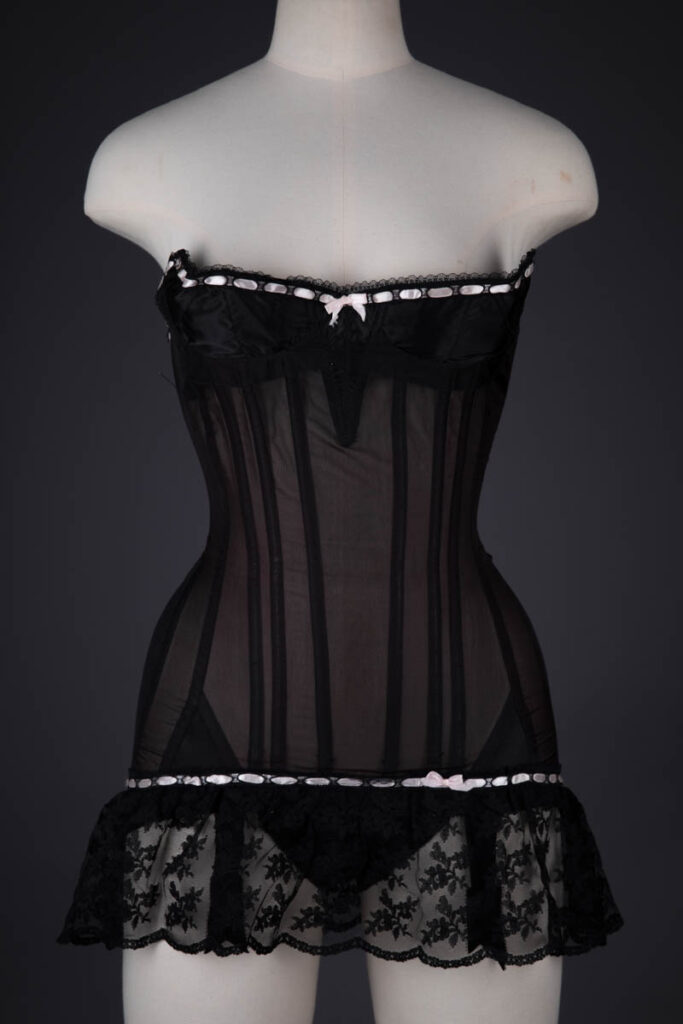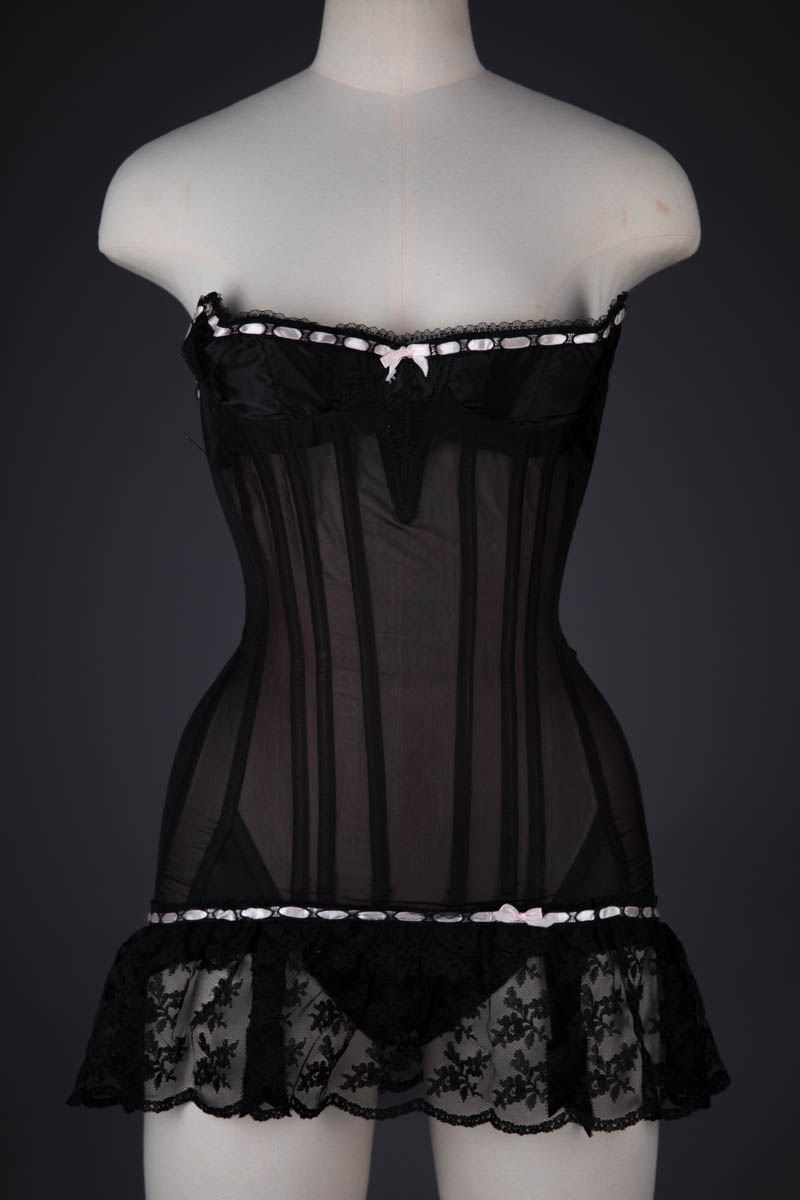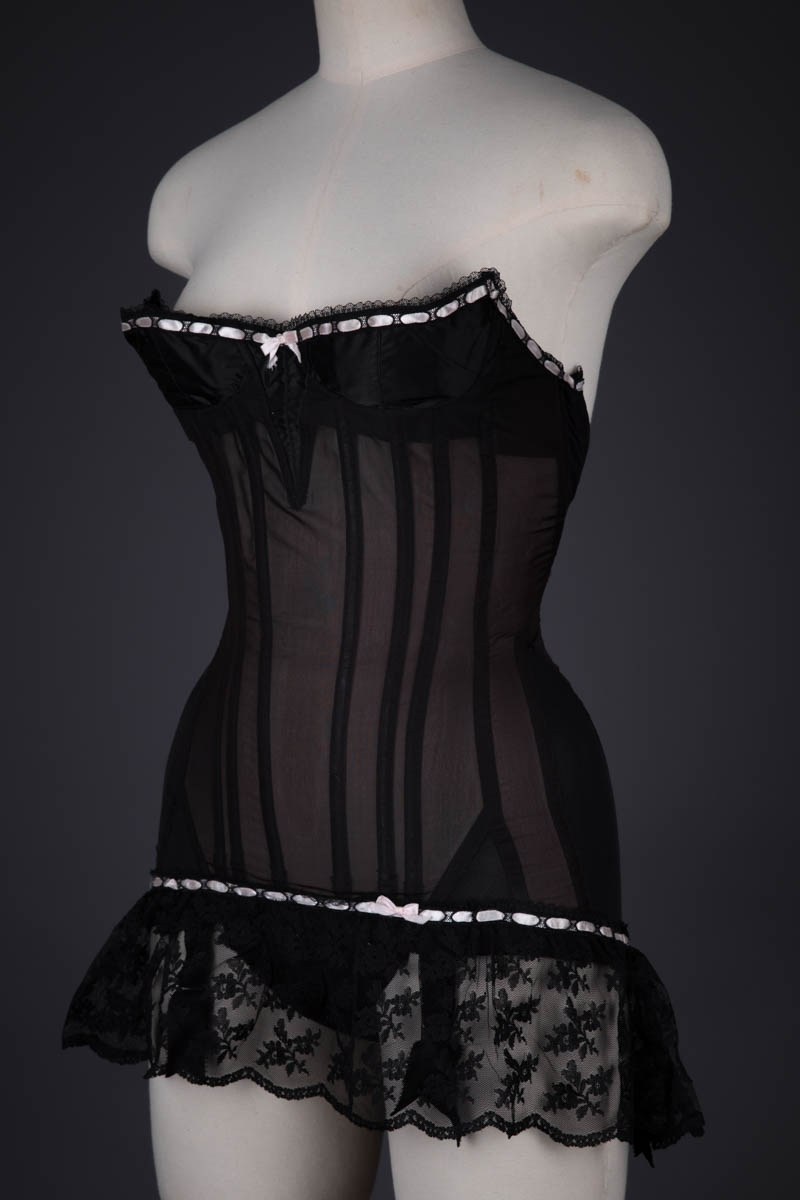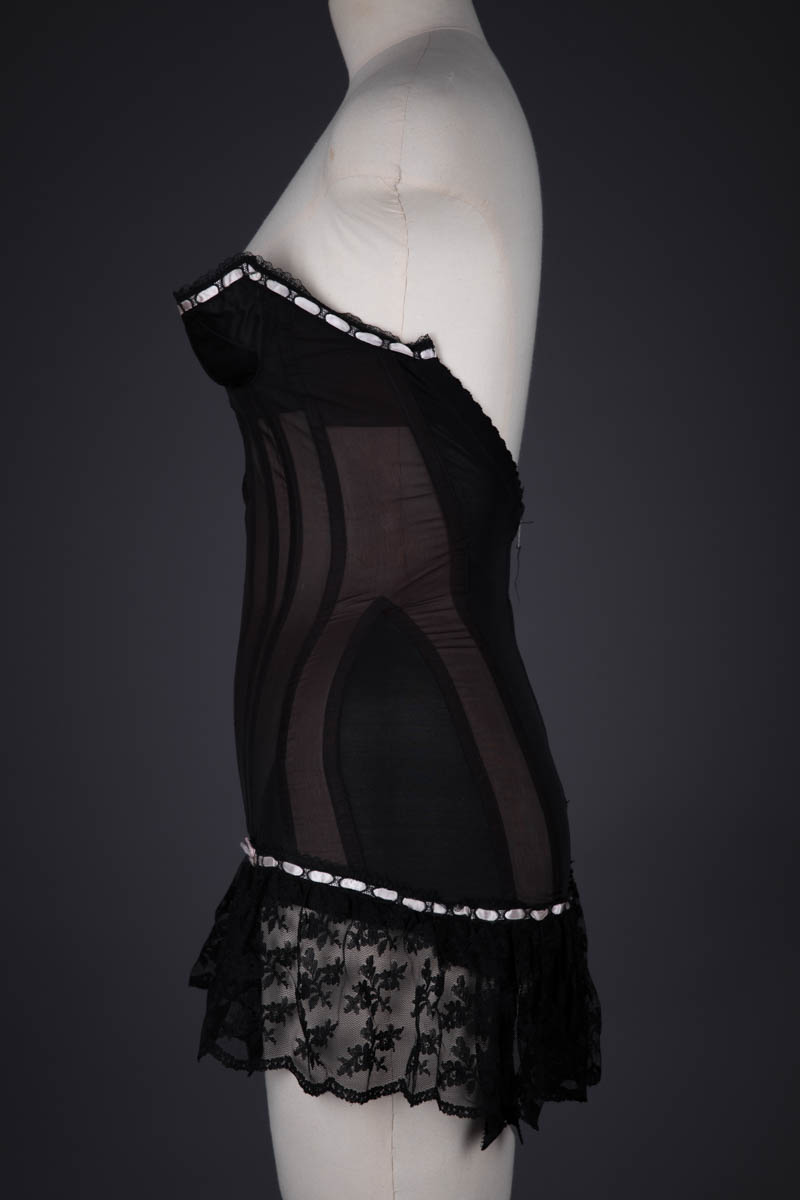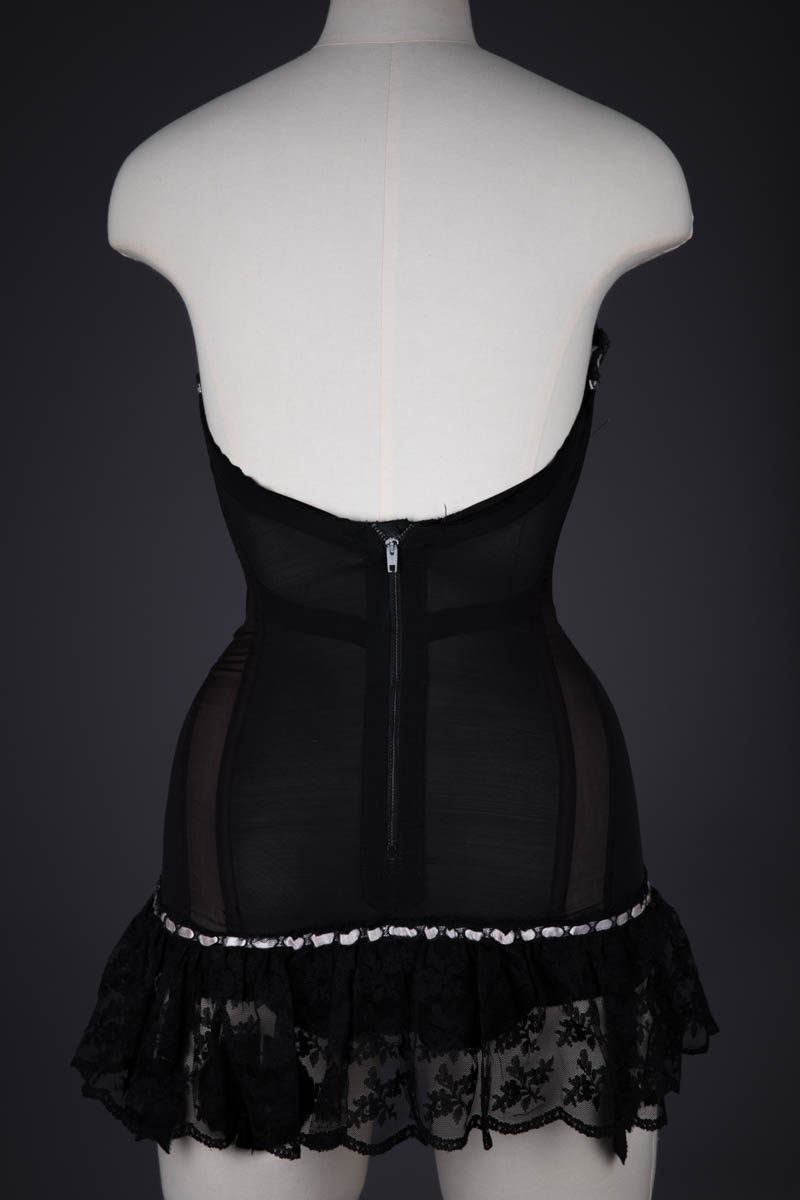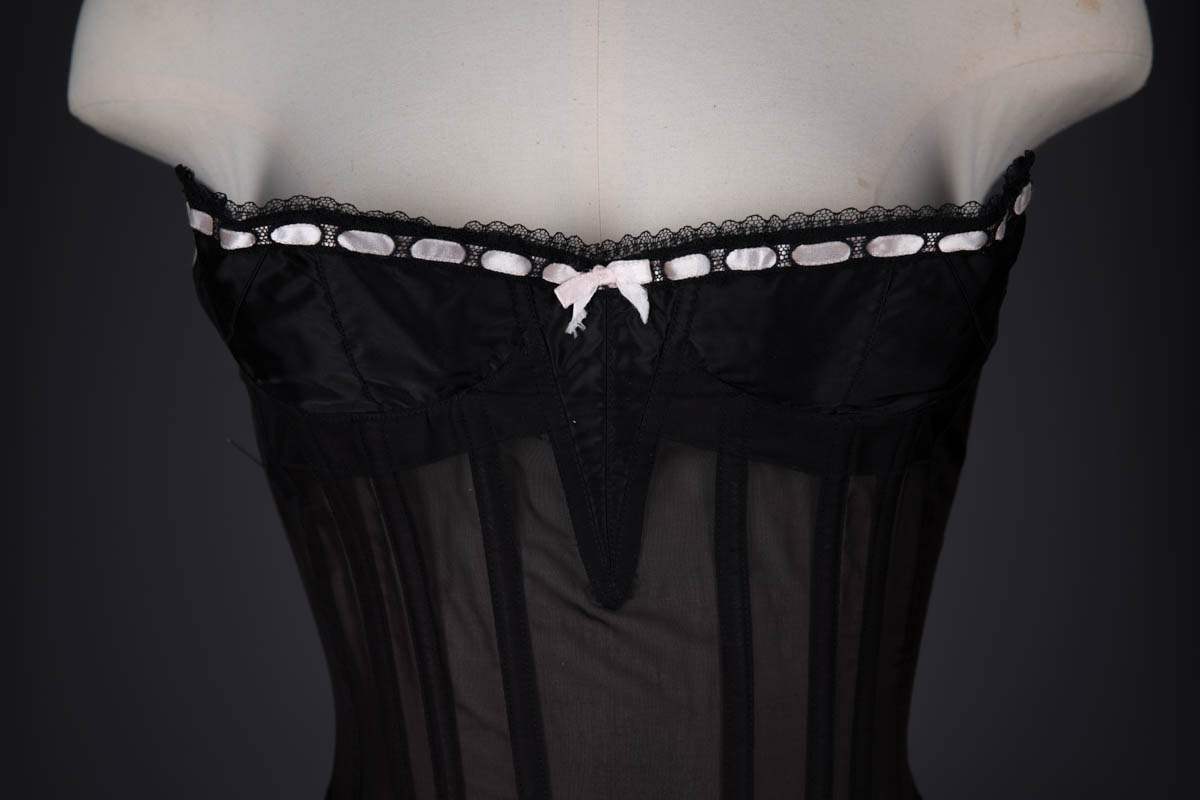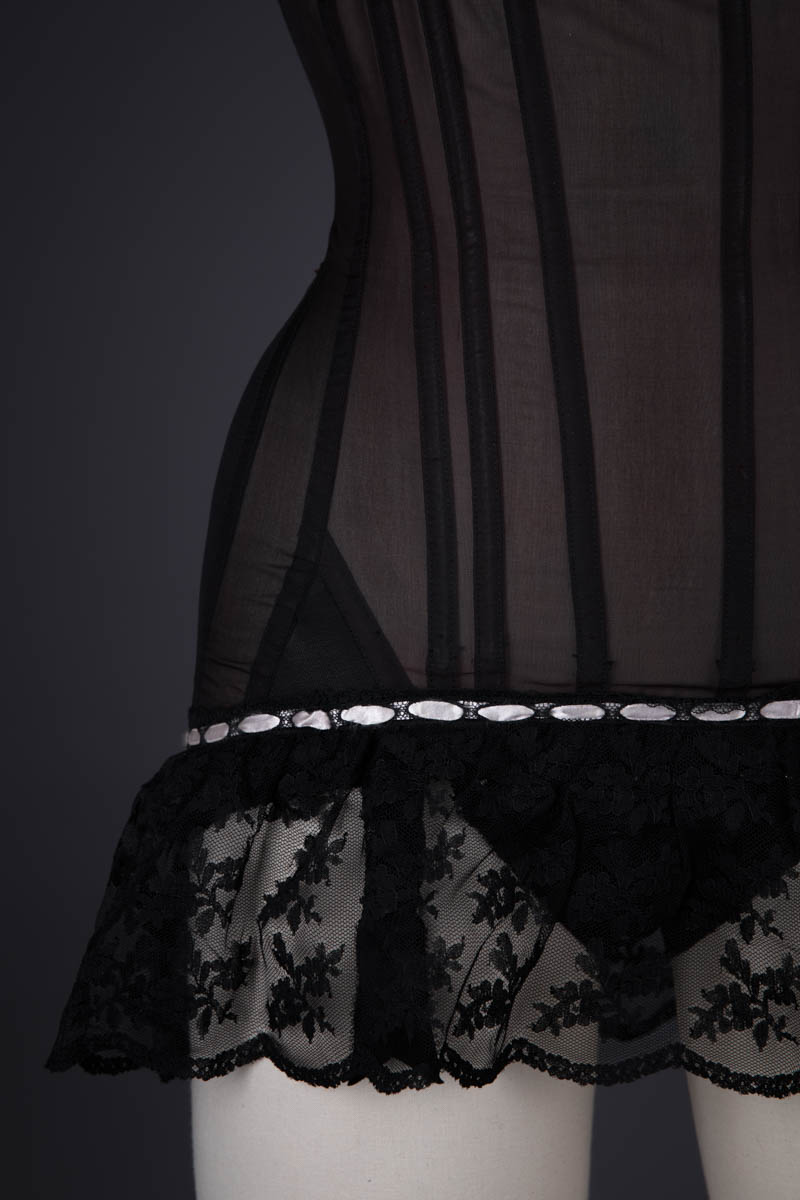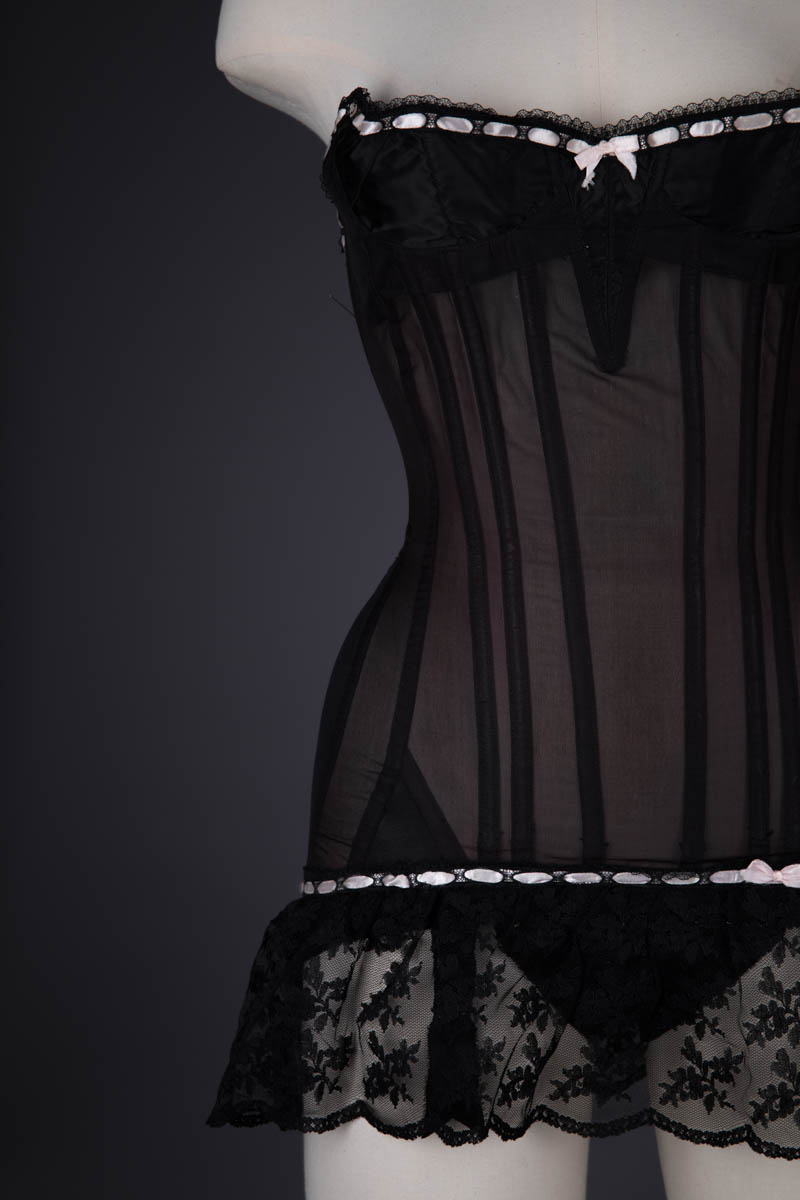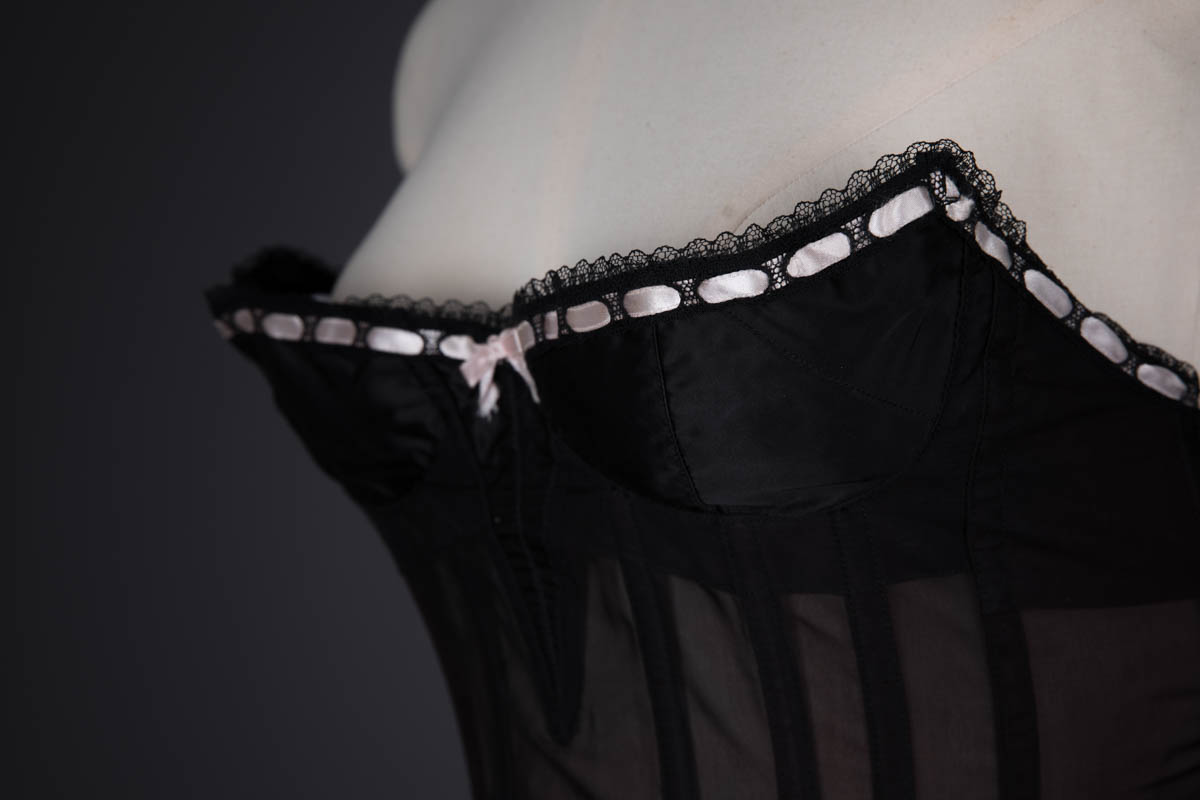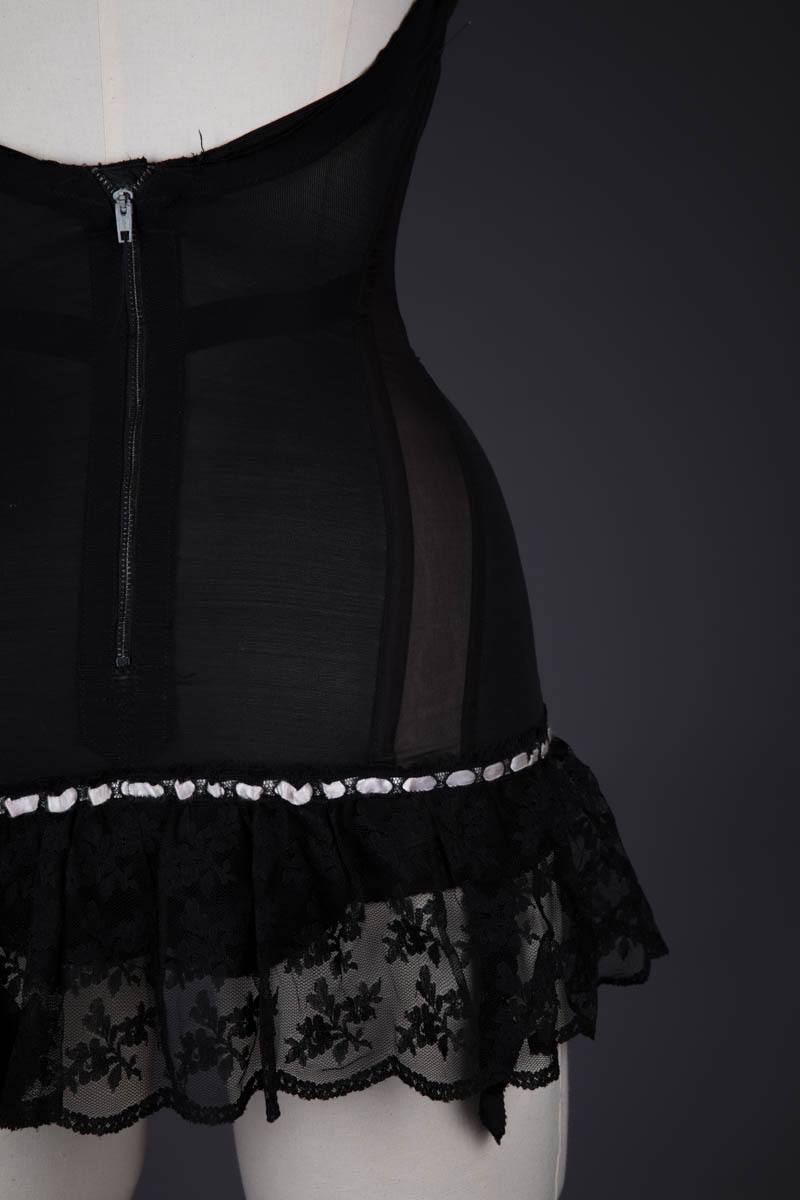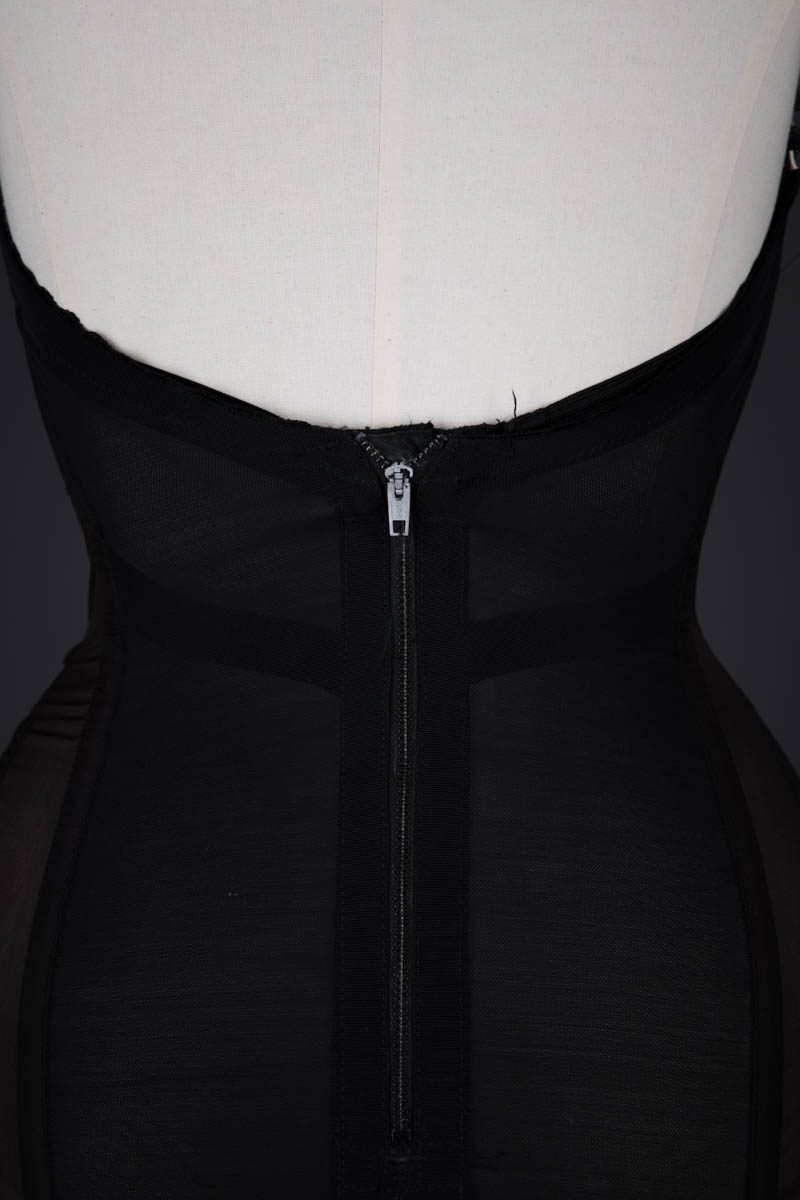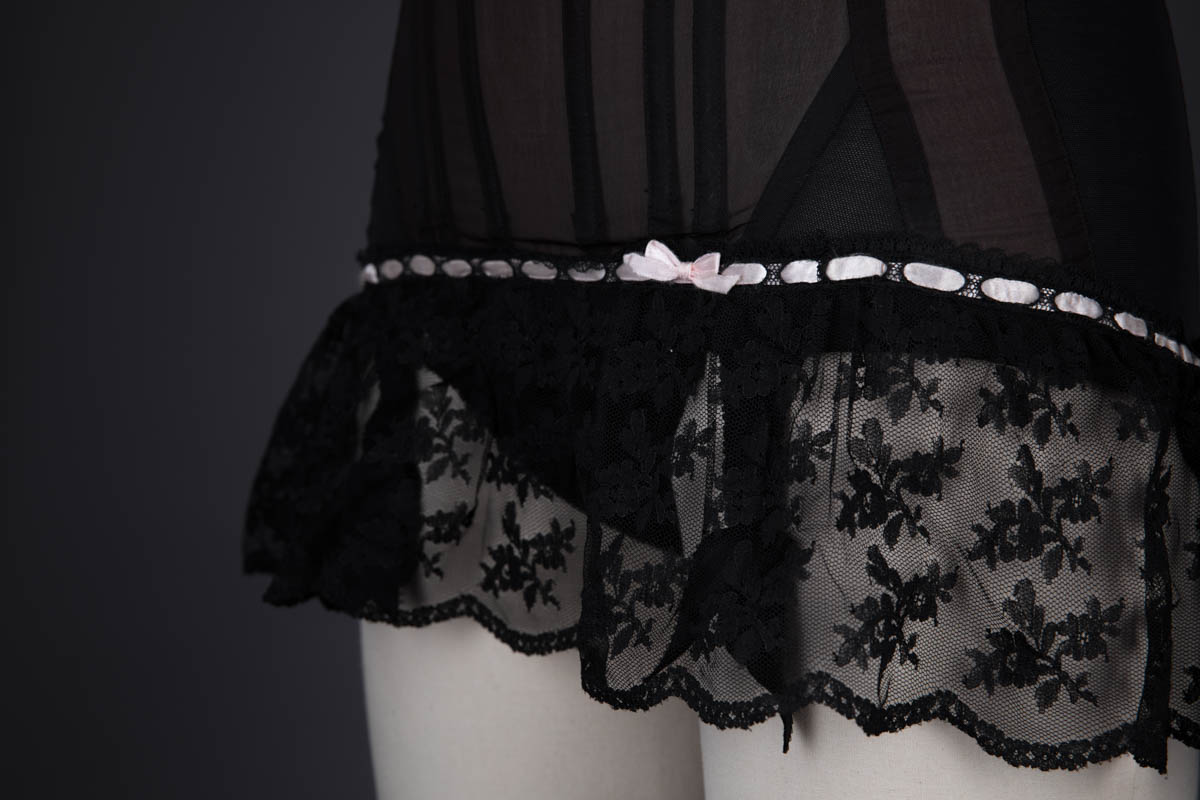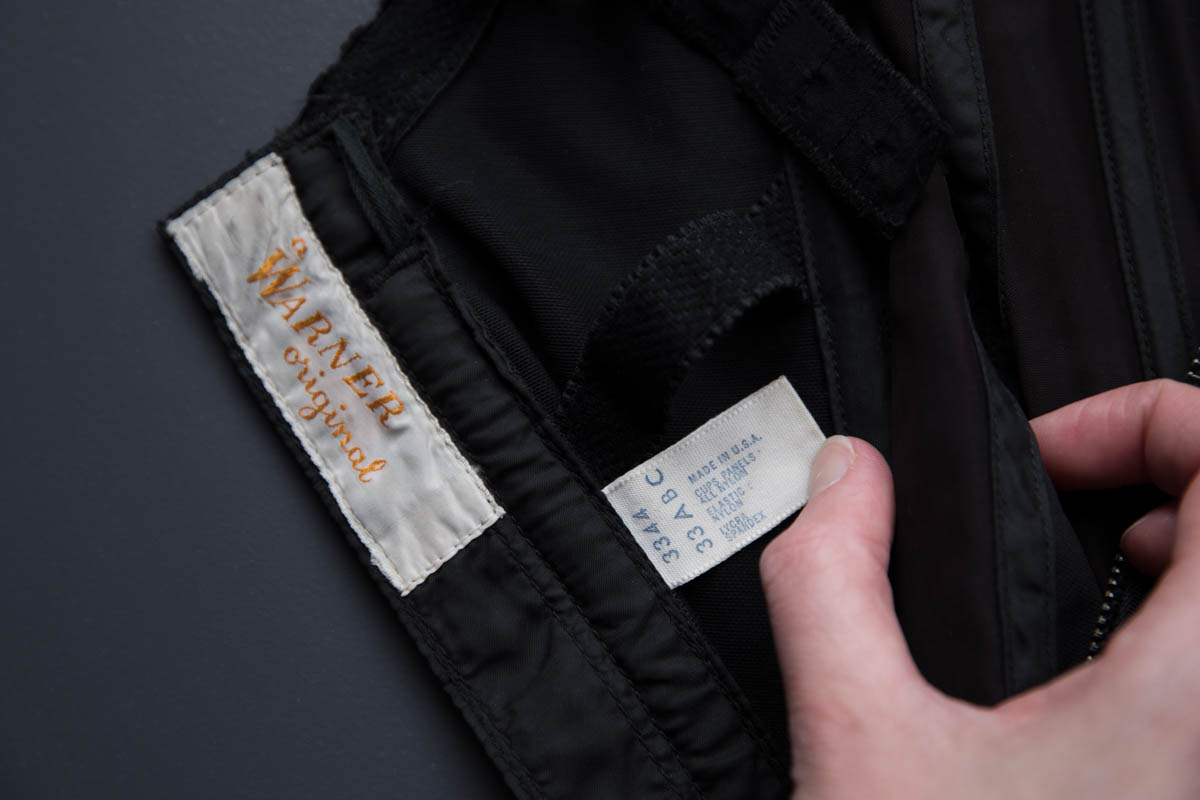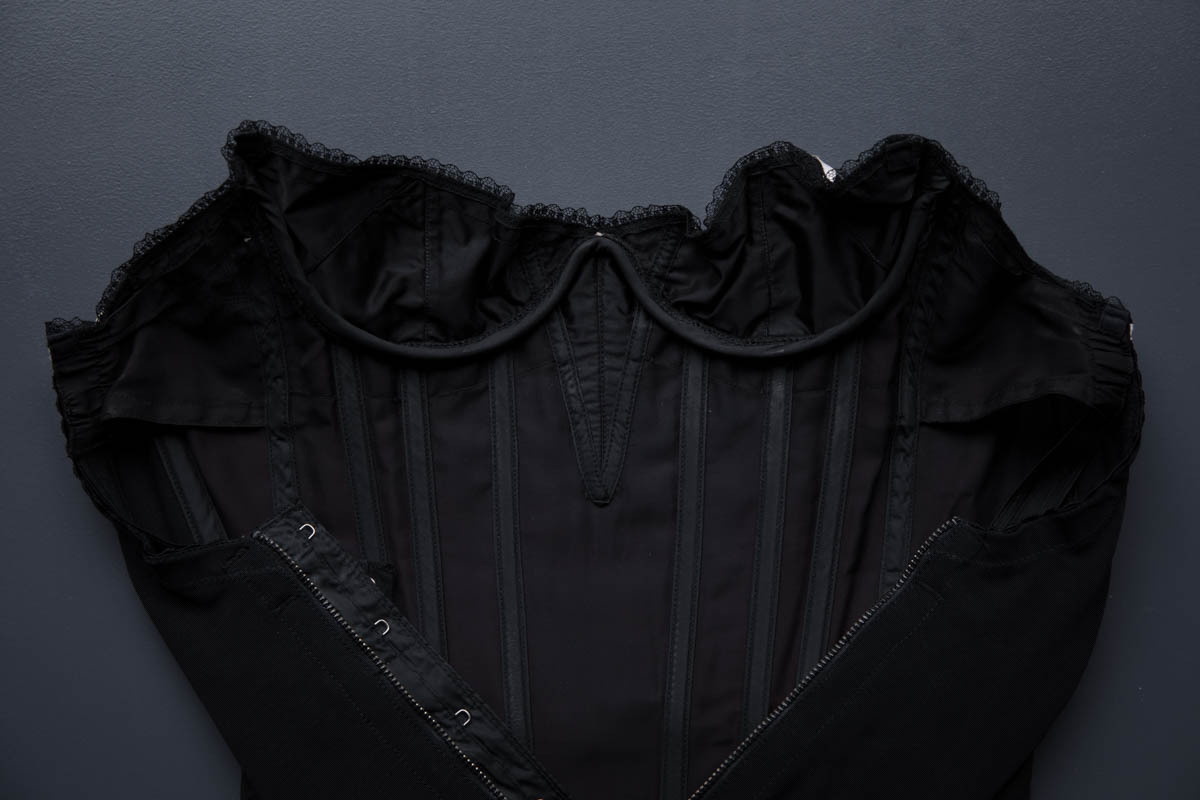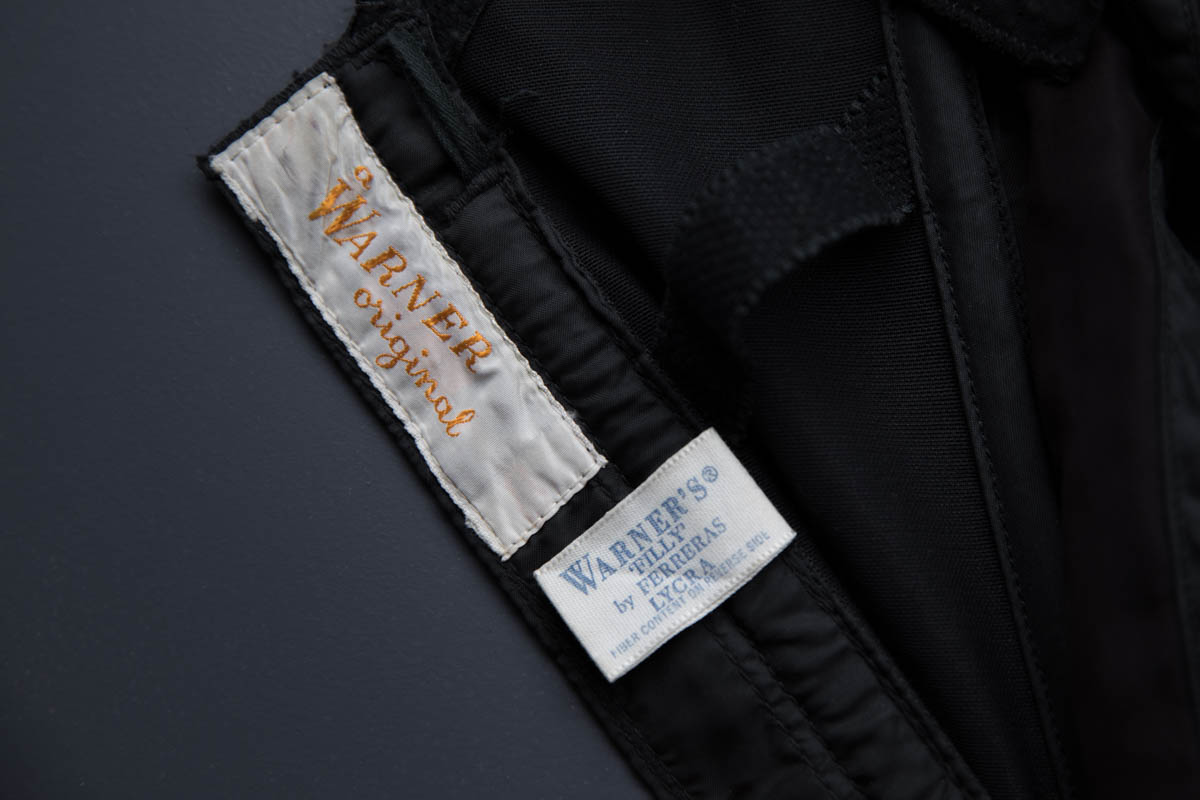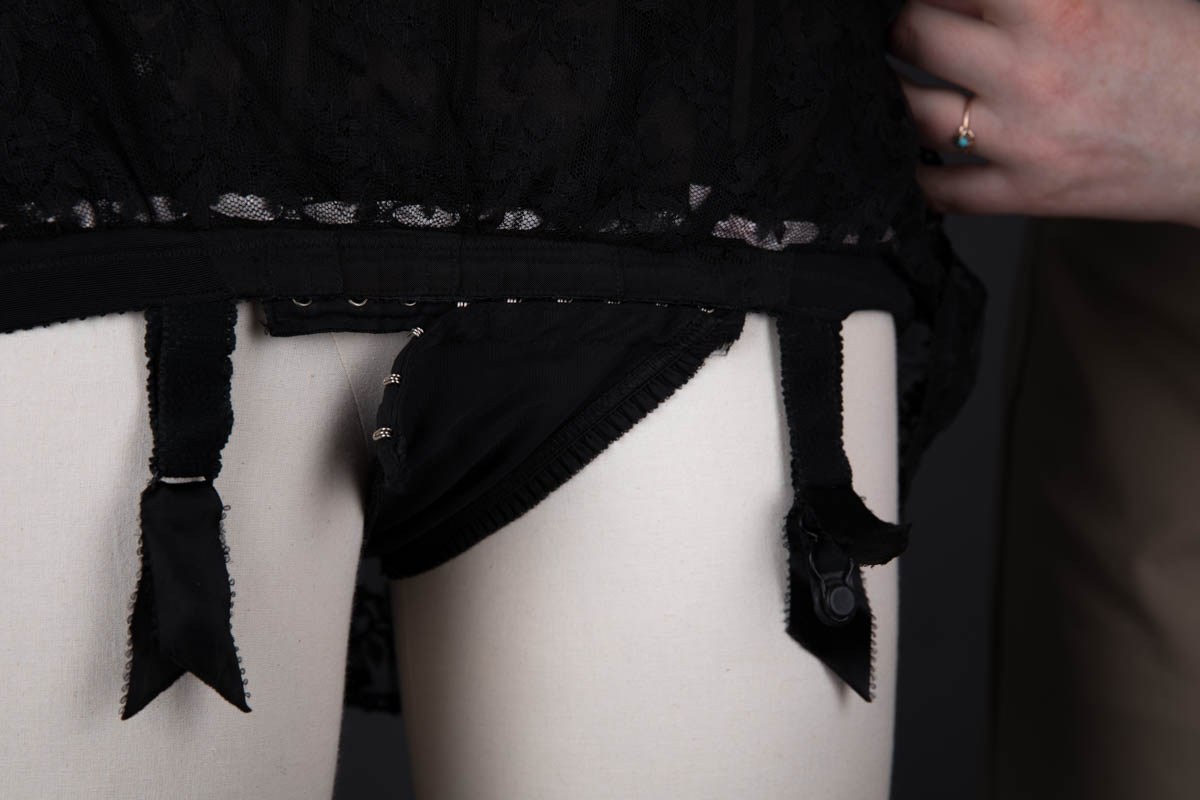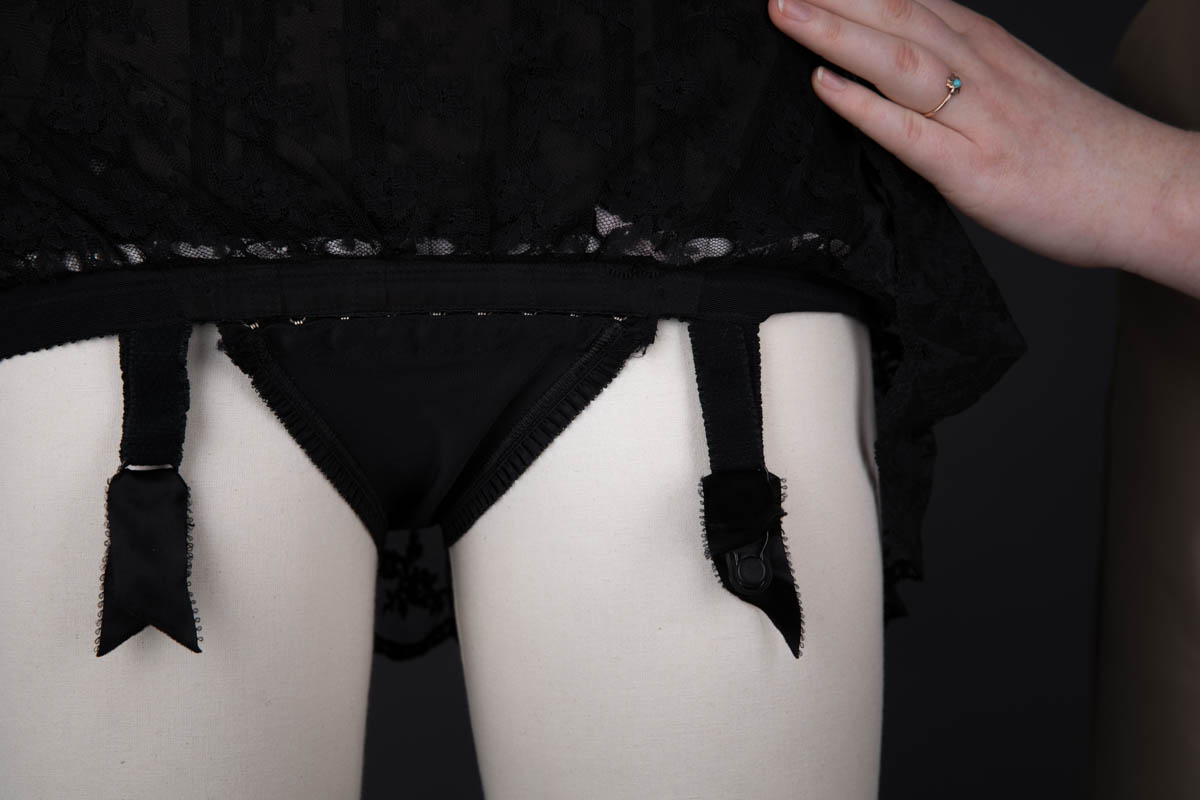Date: 1961
Origin: United States
Fabric: Nylon and elastane blend
Brand: ‘Filly By Ferreras’ for Warner’s
A nylon corselet trimmed with ribbon slot lace, with a ruched lace skirt. The bustline offers only demi-bust coverage, with the cups structured with a mono underwire and V separator. Loops at the cup apexes were likely intended for detachable shoulder straps. The garment is structured with vertical steel bones throughout the body. Stretch mesh gussets at the hips allow for greater flexibility and freedom of movement.
The corselet has a low back cut and fastens with a metal zip over metal hooks and eyes. The garment is cut low on the hips, and has a detachable gusset between the legs to help maintain even tension over the body when worn. There are four detachable elastic suspender straps at the leg edge of the corselet.
The ‘Filly By Ferreras’ collection was designed by Miguel Ferreras in 1961, was photographed for Time magazine, and was supposedly quite expensive for the time. The collection was presented to a range of lingerie brands to bid on the rights to, with Warner’s making the winning bid. The half cup and wide/shallow wire design was intended to “fit” up to 3 cup sizes (arbitrary A/B/C).
Miguel Ferreras moved from Cuba to the US in the late 1940s to study dress design, and apprenticed under the couturier Charles James. In the 1950s he opened his own fashion salon in New York. Shortly afterwards in 1957 he met, and after a whirlwind romance married, socialite Oonagh Guinness. The pair adopted two children together but later divorced in 1965.
In the late nineteenth century, New York physician Dr Lucien Warner gave up his practice to begin a new career lecturing on women’s health issues, including the effects of the corset. In 1873, he designed a corset that provided the desired fashionable shape along with increased flexibility. The following year, Lucien Warner and his brother founded Warner Brothers Corset Manufacturers. After buying Mary Phelps Jacob’s brassiere patent in 1915, Warner’s went on to introduce lettered cup sizing in the 1930s and released its first line of extremely successful ‘Merry Widow’ foundation garments in 1952.
From the collection of Karolina Laskowska
